|
HOME: www.hiltonpond.org |
|||
THIS WEEK at HILTON POND Subscribe for free to our award-winning nature newsletter (Back to Preceding Week; on to Next Week) |
WHITE HUMMINGBIRDS 2014: It's been a few years since we've posted a collection of white hummingbird images, but we got so many reports in 2014 we're devoting another installment to this unusual phenomenon. We've never had a hummer with aberrational plumage here at Hilton Pond Center--just normally pigmented Ruby-throated Hummingbirds and a couple of winter vagrant Rufous Hummingbirds--but people around the country have been kind enough to share their original photos of albinos, leucistos, and pieds. This year we got more than six dozen reports from Canada south to Georgia and west to California, and many observers sent pictures. Unfortunately, a lot of those barely showed the hummingbird in question, while others were taken from a distance with cell phone, in poor light, or through window screens. We appreciate everyone's efforts but have selected just the 14 "best" photos for inclusion here--all in the hope hummingbird enthusiasts will try even harder to acquire clear photos to document white hummers they encounter. Thanks to everyone who submitted reports, and please accept our apologies for not being able to respond to each of several hundred e-mails and phone calls we received about white hummers this year.
All text, maps, charts & photos © Hilton Pond Center White hummingbirds fall into three general classes: 1) True "albino" hummers (those that lack all pigment and bear pristine white plumage and pink eyes, feet, and bill--including the above we banded near Chapel Hill NC); 2) what we have nicknamed "leucistos" (leucistic birds with more-or-less white feathers but usually having dark eyes, feet, and bill); and, 3) "pieds" (birds with more or less "normal" feathers spotted with some that are white). All these birds may look larger than their normally pigmented counterparts, but this is just an optical illusion. They do stand out from the flock when around other hummers, however, and are guaranteed to attract attention. Alas, white hummers don't seem to last very long in the wild. Except for non-migratory western species, we're not aware of any albino or leucisto that has survived into its second year. (Occasional pieds may be exceptions.) There are likely lots of reasons for such an early demise; for example, white birds are easily seen by predators, and odd plumage may be connected with other genetic "defects." We also speculate white feathers are weak because dark melanin in normal feathers is a structural, strengthening pigment; thus, unpigmented plumage wears out very quickly--perhaps even on the first southbound trip--meaning migratory white hummers may end up in the Gulf of Mexico. The first 11 birds below are in chronological order, with the newest reports first; since they were encountered during the "breeding season" (spring through fall) in eastern North America, it would appear all are Ruby-throated Hummingbirds. (That said, some white hummingbirds can be quite difficult to identify to species.) The final three photos are of western reports--probably all Rufous (or Allen's) Hummingbirds.
All text, maps, charts & photos © Hilton Pond Center This grayish leucistic bird was reported by Veronica Brown of Laguna Vista TX on 29 October 2014. (NOTE: Because of the late date and location near the U.S.-Mexican border, this bird could be a Black-chinned Hummingbird, but we suspect it is a ruby-throat that will either overwinter or attempt southerly migration.)
All text, maps, charts & photos © Hilton Pond Center A word about the bird above, reported by Karla Hays while on vacation at The Anchorage By The Sea in Ogunquit ME on 30 September 2014. At first we thought it might be a leucistic bird with a bunch of yellow pollen on its bill. However . . . .
All text, maps, charts & photos © Hilton Pond Center . . . . we we checked our e-mails more closely we found another image--undoubtedly the same bird--that had been taken a few days earlier on 25 September 2014 at the same location by Dee Lalley. From Dee's image there's no question this individual is a full albino. Rhoda Bunnelll also reported this bird from essentially the same Maine locale on 2 October 2014, meaning the albino was hanging around longer than these birds sometimes do.
All text, maps, charts & photos © Hilton Pond Center Linda Henry reports this about her leucisto above: "Late on 29 September 2014 we saw an all white hummer on one of our eight feeders. Next morning I stood in one spot for several hours just to get a decent photo of her. We had a local TV station (KSLA, Channel 12, Shreveport) come out to get a video of "Miracle" (that's what I named her). We live in Haughton LA just a few miles east of Bossier City--separated by Red River from Shreveport."
All text, maps, charts & photos © Hilton Pond Center Photos of this unusual leucistic bird with uniformly brown back and crown were taken by Lauren Cross in Woodstock AL on 28 September 2014. (Note the pollen staining on top of the head.) Lauren reports the bird was "very talkative, constantly chirping" and feeding primarily on flowers of a white Butterfly Bush.
All text, maps, charts & photos © Hilton Pond Center Donna Pierce of Big Sandy TN hosted this full albino hummer for at least a week starting 16 September 2014. Unpigmented pink feet are quite obvious in this diagnostic photo.
All text, maps, charts & photos © Hilton Pond Center Patricia Conaghan of Mandeville LA (north of New Orleans) sent this photo of a fully white but leucistic hummingbird on 18 September 2014. The other normally pigmented Ruby-throated Hummingbirds appeared to ignore the white individual. The leucisto's "white eye" is an artifact caused by camera flash.
All text, maps, charts & photos © Hilton Pond Center Chad Downum photographed this gray-backed leucisto at the home of Jimmy & Joyce Greenlee in Tontitown AR on 15 September 2014. The eye looks quite large because the bare skin around it is dark.
All text, maps, charts & photos © Hilton Pond Center Chelsey Perkins, a reporter with the Brainerd (MN) Dispatch, sent the excellent photo above with a note on 2 September 2014: "We have had two readers in neighboring communities send in photos of what appears to be a true albino hummingbird. Although it's impossible to say it is for sure the same bird, given what I can gather it seems this is a very rare occurrence." The hummer is indeed a true albino. Its dark feather bases appear dark but are not pigmented--nor is the "subalular apterium," the bare spot just below the bend of the wing. When this featherless spot is pink it is a sure sign of true albinism.
All text, maps, charts & photos © Hilton Pond Center By comparison to the albino just mentioned, look at the subalular apterium on the bird above; dark, pigmented skin shows through and tells us this is leucism rather than albinism. This hummer was at the home of Karen Leiderman of Douglassville, PA on 25 August 2014. Karen reports other hummers chased away the leucisto.
All text, maps, charts & photos © Hilton Pond Center Cher McHan of Country Star Bed & Breakfast in in Bryan TX had this leucistic hummingbird for at least two days beginning 16 August 2014. Cher observed that, unlike many leucistos, this bird had brown feet rather than black.
All text, maps, charts & photos © Hilton Pond Center That the hummer on the right has tail feathers and a flank that are rusty is a good sign the photo on 26 July 2014 was not taken in the eastern U.S. In fact, this is an image of what are likely two Rufous Hummingbirds--one leucistic, one normally pigmented--at the Farmington NM home of Jake (last name not given).
All text, maps, charts & photos © Hilton Pond Center This striking leucistic bird with dark wings and a hint of rust in the tail is either a Rufous or Allen's Hummingbird. The image was taken by David Schneiderman in North Hollywood CA on 21 July 2014.
All text, maps, charts & photos © Hilton Pond Center The final photo above was one of the few reports we got this year of "pied" hummingbirds whose plumage is a mix of white and normal feathers. This particular individual had a pink bill and feet, plus white splotches on head, chest, and wings. Taken by Michele Mueller of Trabuco Canyon/Rancho Santa Margarita CA, the unusually pigmented bird is dining with what appears to be an adult male Anna's Hummingbird. It showed up the day before Christmas in 2013 and hung around at least through the new year. Remember, if you get white hummers at your feeder in 2015, please document the sighting in a clear photo and e-mail it with your name, city/state, and anecdotal info to RESEARCH. Please do not make your report via phone unless you are within 50 miles of Hilton Pond Center and would be agreeable to our coming to band and further document your albino, leucisto, or pied hummingbird.
All contributions are tax-deductible on your |
|---|
|
"This Week at Hilton Pond" is written and photographed by Dr. Bill Hilton Jr., executive director of Hilton Pond Center for Piedmont Natural History.
|
|
|
Please refer "This Week at Hilton Pond" to others by clicking on this button: |
Comments or questions about this week's installment? Send an E-mail to INFO. (Be sure to scroll down for a tally of birds banded/recaptured during the period, plus other nature notes.) |


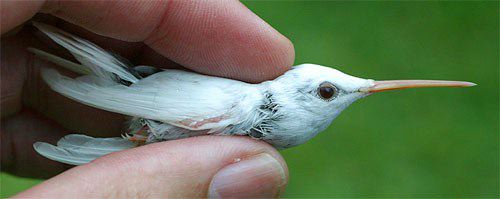
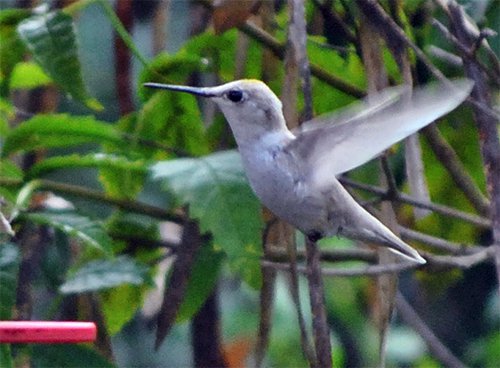
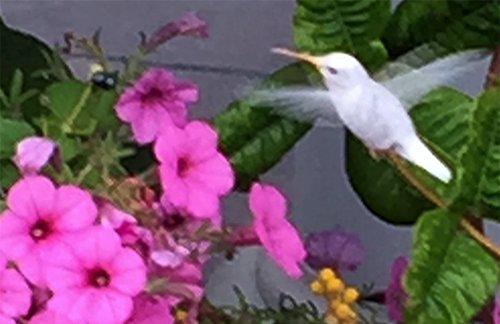
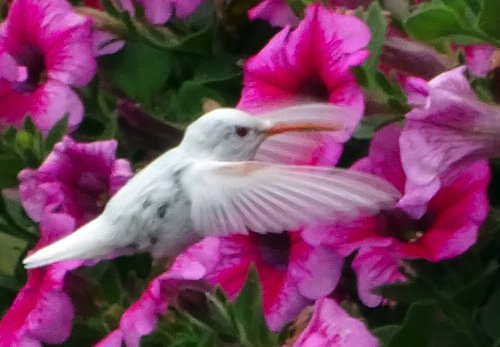
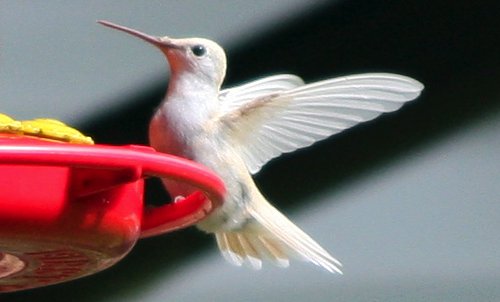
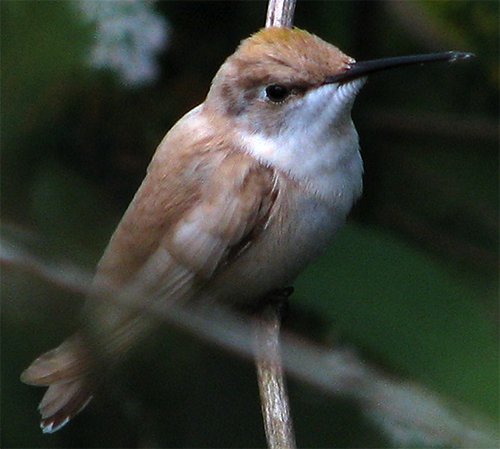
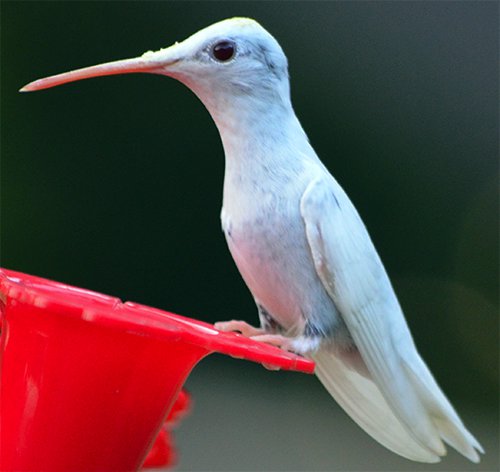
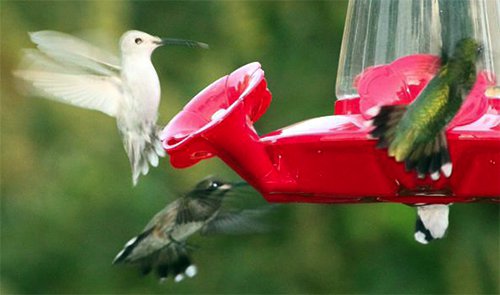
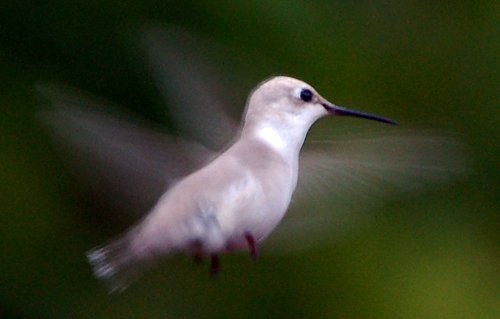
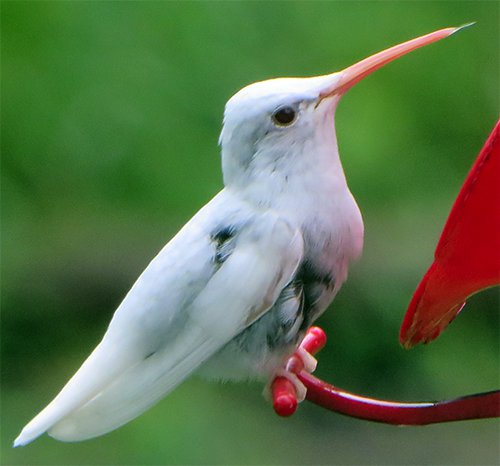
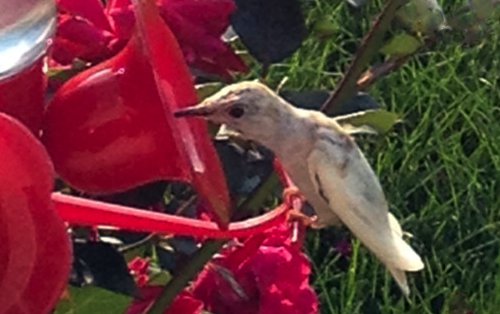


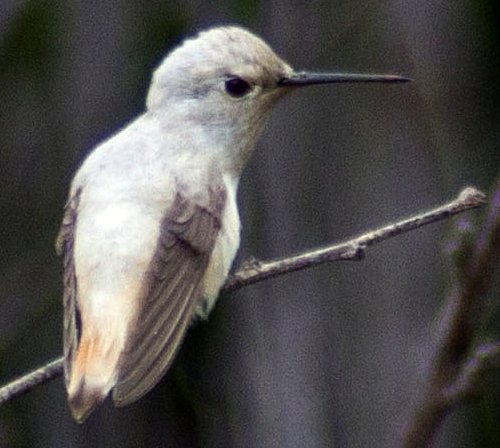
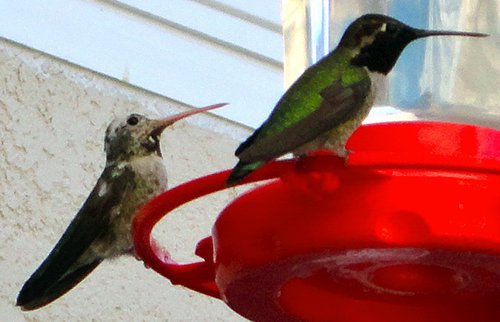








 Please report your
Please report your Oct 15 to Mar 15:
Oct 15 to Mar 15: